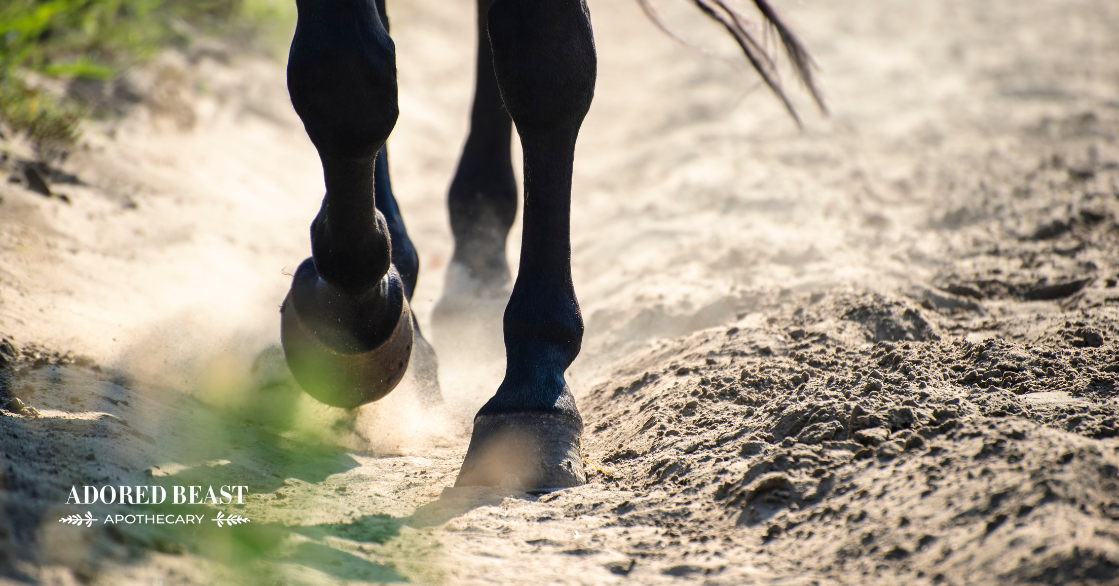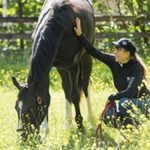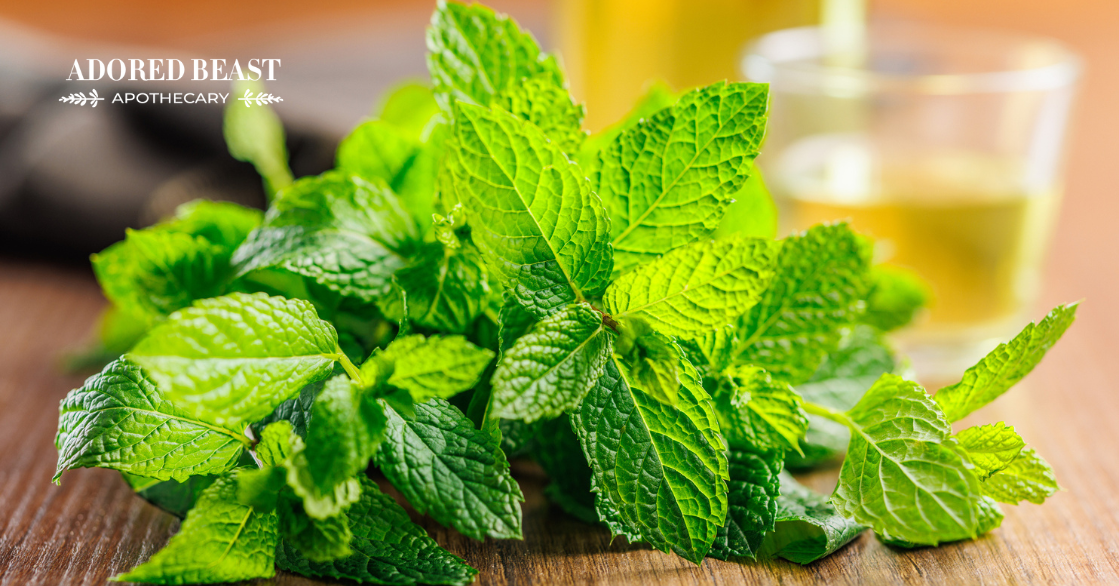Mud fever in horses is a frustrating skin disease affecting equines all over the world. It is also known as scratches and greasy heel. Conventionally, the focus is on topical treatment of the affected area of the skin.
However, from a holistic perspective, this problem doesn’t start on the skin. It starts inside the body – with the immune system and the health of the gut and skin microbiome.
Today, let’s explore the internal cause of this seemingly external disease.
What is Mud Fever in Horses?
Mud fever in horses presents as skin lesions, often around the legs and feet. It can also occur on other parts of the body as well.
Traditionally, it has been associated with a bacteria called Dermatophilus congolensis. More recently, it has been discovered that other organisms including Staphylococcus, fungi, and mites can contribute to this disease. Progression of mud fever can involve swelling and oozing of the skin and even lameness in very severe cases with deep infection in the feet or legs.
On the outside, the skin barrier needs to change and become susceptible to bacteria and fungi in order for the skin to become affected. Chronically wet and muddy conditions are often to blame as the most common causes of skin infection, along with abrasive footing that injures the skin barrier and allows bacteria to enter under the outer skin barrier.
In combination with this, there is an internal imbalance which involves the skin pH and the ability of the immune system to keep harmful bacteria from multiplying underneath the skin. This is why topical treatments don’t even completely solve the issue. This disease progresses in relation to environmental stressors so it’s important to do a check list to see which stressors might be present. There are often areas where you can improve living conditions in order to help your horse recover.
Solutions for Mud Fever
It’s important to take a good look at the reasons mud fever might be affecting your horse. Environmental stress has a large role to play in this. Often times, there is more than one stressor that we need to address:
- Excessively Wet and Muddy Standing Conditions. This is one of the key causes of mud fever. If this is an issue where your horse lives, move them to a location with well-drained footing with no mud. Excessive wetness causes the skin barrier to become soft and it can also change the pH of the skin, which affects which bacteria favour living there.
- Diet. A pro-inflammatory diet can exacerbate all infections in the body. Ingredients that cause inflammation for horses include:
- Starch/Sugar. This is a major culprit in horse diets and you need to address it thoroughly. Highly extruded feeds are often the culprit but high sugar hay can also contribute. Make sure your hay has a low NSC reading and don’t use any form of extruded grains or legumes which are extremely high in starch once they are processed with high heat. Fibre and protein help to regulate sugar and insulin so these ingredients should be top of mind in the equine diet, especially fibre.
- Genetically Modified Foods (GMOs). Eliminate any ingredients in your horse’s diet that include conventionally-grown wheat, corn, soy, alfalfa, or other GMOs as soon as possible. GMOs are heavily sprayed with the herbicide known as Round-Up (glyphosate) which is an immune and metabolic deregulator and patented antibiotic. Not only do these ingredients depress immune function, but they also kill off the good bacteria that helps your horse keep mud fever in check. Choose only feeds that are guaranteed certified organic and non-GMO.
- Nutritional Imbalance. Horses with nutritional deficiencies have more trouble with disease in general because it’s hard for their bodies to maintain homeostasis. Be sure to analyze your horse’s diet with a professional and via blood testing to see if their diet needs some additions or changes. Watch my lecture on the most common equine nutrient deficiencies by clicking here.
- Gut Imbalance. Gut microbiome imbalance can lead to an array of equine disease and unfortunately, it’s a common issue of domestic horses. Estimates suggest that as many as 80% of performance horses and 60% of pleasure horses have ulcers or some form of gut disease. This can affect the entire body and other microbial communities including the skin microbiome. Be sure to support your horse’s gut to strengthen the ability to fight mud fever. Repeated use of NSAID drugs can cause ulcers so steer clear of these whenever possible. To see my lecture on gut disease in horses, click here.
- Repeated Antibiotic Use. Antibiotic medications can affect a horse’s susceptibility to harmful bacteria through repeated use. This is because they target the pathogenic bacteria but they also affect the healthy microbial community. The more often antibiotics are used, the more risk there is of post-secondary bacterial infections if special care isn’t taken to ensure the microbiome is restored. The use of probiotics and medicinal herbs are important here. Ideally, don’t use antibiotics unless it’s a serious situation. Consider herbal and homeopathic options first – do this with a professional.
- Synthetic Steroids. Steroids such as prednisone and dexamethasone can decrease immune function and increase susceptibility to bacterial infections. If your horse needs either of these medications, consult an integrative vet or animal practitioner for options on how to reduce these harmful medications and/or support your horse if they do need to be on them.
- Sudden Changes in Environment. Sudden changes in your horse’s routine can cause physiological stress, which depresses immune function. Be sure to properly prepare your horse for changes and support them through the ones that are necessary. Changing things gradually is ideal but with moving and horse shows, you may need to seek out a herbal or homeopathic professional to help them through.
- Underlying Disease. Diseases including Cushing’s and laminitis can cause an increased susceptibility to mud fever. This is due to decreased blood flow to the leg tissue, which promotes anaerobic (oxygen-phobic) bacteria that causes the infection. If your horse is older and comes down with mud fever, it is an indication that circulation may be lacking and that metabolic exploration and support is a good idea. You should consider asking your vet to run blood tests for insulin resistance and Cushing’s disease. To learn more about solutions for Cushing’s and laminitis, click here to see my video.
- Poor Leg and Foot Circulation. Blood flow is important for oxygenation of the leg tissue. If circulation is poor, this can contribute to pathogenic bacterial growth since many pathogens favor low-oxygen environments. Factors that affect blood flow to the legs and feet include lack of movement, incorrect farrier work, high starch diets, and metabolic disease.
- Excessive Leg Washing. Though washing affected areas with anti-bacterial soap can temporarily relieve symptoms, too much skin washing can disturb the oils and the microbiome of the legs. Consider using a gentle castile soap instead of an antibacterial soap, as well as actually washing the legs less often. Wash legs only when necessary and keep them as dry as possible to prevent bacterial growth. You may also choose to shave the legs to keep them even drier during wet months.
Mud fever in horses can be hard to get a handle on, but addressing the internal factors is important to keep it at bay. I hope this article provides you with some new tools to help with this frustrating problem!












